Foamy foam foam! (a closed-cell miracle)
This last week was a great one. In preparation for having spray foam installed this weekend, I had a few odds and ends to wrap up before they were forever locked in. I tested all switches and outlets to make sure my electrical system was solid. I also added some blocking to give myself more surface area to screw into when installing kitchen cabinets, shelving, and my wall-mounted bathroom hand sink. Once done I did my best to document the electrical and plumbing systems with the following photos.
The exterior of the house got that much closer to finished as well. I particularly like the way the "East" wall (with the door) now looks with the cedar siding finished.
Then came the foam explosion! The whole foaming process is quite interesting. The closed cell foam comes out a hot, steamy liquid, heats up even more (to almost 200 degrees), which expanding to fill something like 10 times it's volume, then cools and hardens all in 26 seconds. When dried it is very rigid. I'd call it foam cement. This is a pain because it takes a grinder to clean spray-over off each stud and rafter, and during this "cleanup" process, it created an insane amount of foam dust. What really surprised me was how long it took to grind off all the excess foam. The grinding and cleaning process took far longer than the spraying process.
Now that I've got it somewhat cleaned up, it still needs more time to air out, but at least it doesn't look like a foam blizzard anymore.
The house was filled with far too many hot, toxic fumes to get photos of the actual spraying, but here are some photos of the process.
I think I'm going to really enjoy the benefits of the closed-cell foam. As discussed on my post about Tiny House Insulation: Efficiency vs. Health, because of its rigidity, the foam insulation actually adds a lot of strength to the walls. This is particularly helpful on a tiny house to reduce the change of the racking and twisting as the house is traveling down the highway with near hurricane force headwinds.
I don't know the exact statistic, but I believe just 2 inches of closed-cell foam can greatly decrease potential racking -- and I've got 3 inches.
Because the closed-cell foam also acts as a vapor barrier and creates a very envelope, a few things become very important to allow moisture to escape from the house and the keep everything as dry as possible, both inside and out. The first is having a good exhaust fan. This is a must for use during and after showers, and for the moisture created by cooking -- even just by the burning of propane. The second is to use a rainscreen siding system, creating a small gap for air to flow behind the siding material, in order to allow the siding to dry form the inside as well as the outside. Since the closed cell foam will not let any moisture back into the walls, it's important to get some air back there to help with the drying process.


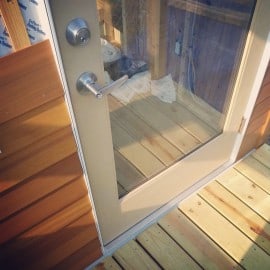

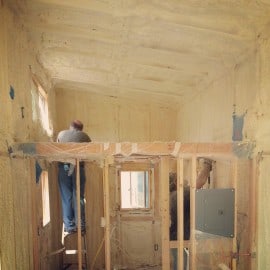
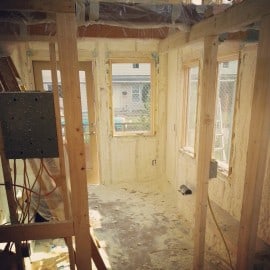
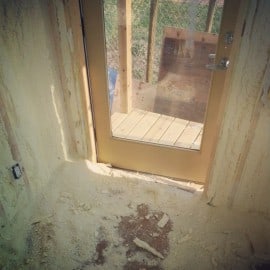
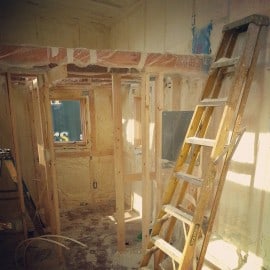
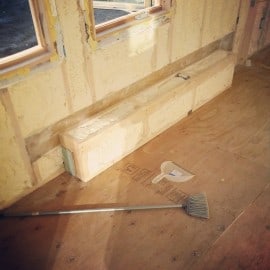
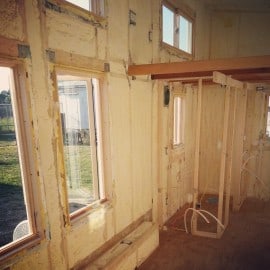
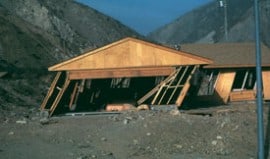

I'm interested to know how your experience with the spray foam ended, after your previous post (https://tiny-project.com/tiny-house-insulation-efficiency-vs-health/) and a winter of living inside. Are you in a cold climate? What is your level of satisfaction? Closed-cell foam sounds like the best option for my own tiny house plan, but I'm debated based on cost (having a hard time calculating actual cost) and the negatives I've heard about health factors.
Would love to hear your thoughts, Thanks!
Mary
I'm very happy with the spray foam, though I'm not in a cold climate so I can't really say how efficient it is in extreme cold. But for those in colder climates I think it's definitely worth the cost. It's also a big time-saver since a spray foam company can come get it done in a day instead of you spending many hours cutting and fitting rigid foam pieces yourself.
how much was it to get the spray foam done, if you don't mind sharing?
Hi Mario -- Our spray foam ended up costing $2,250 for the entire house (8x20, with a lot of windows). We have 3 inches in the walls and 4-5 in the ceiling. The cost may have been lower for us (in Iowa) than it would have been in other states. I also negotiated on the price a bit, so may have received a better-than-average deal.
Now that it's been a while, are you still happy with this choice? Have you had to access any of the electrical through the foam yet?
I'm in Northern California now but who knows where I may end up in the future. I'm leaning toward the wool option right now, despite the time it'll take to install.